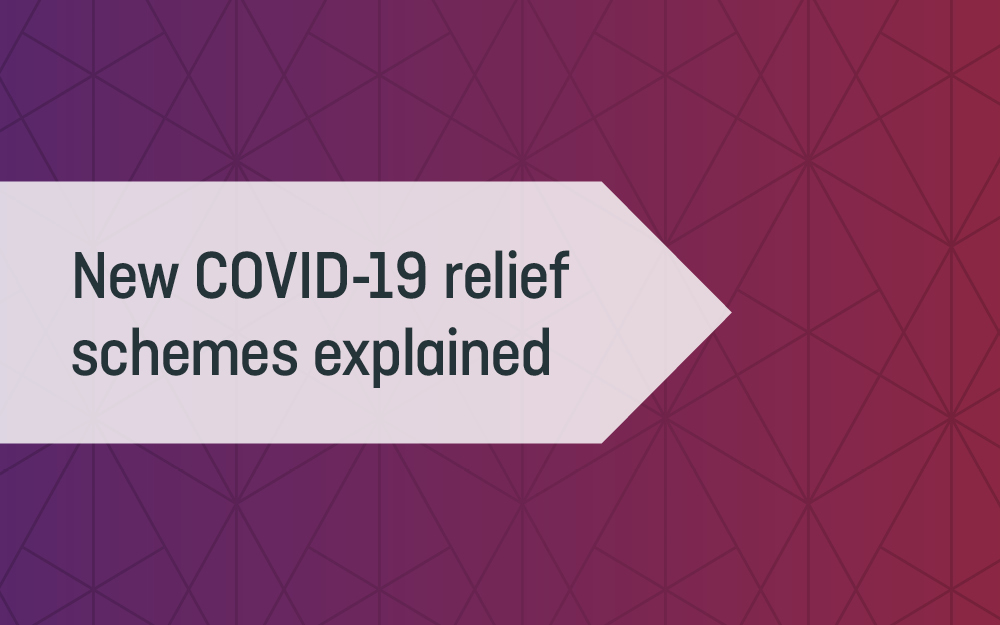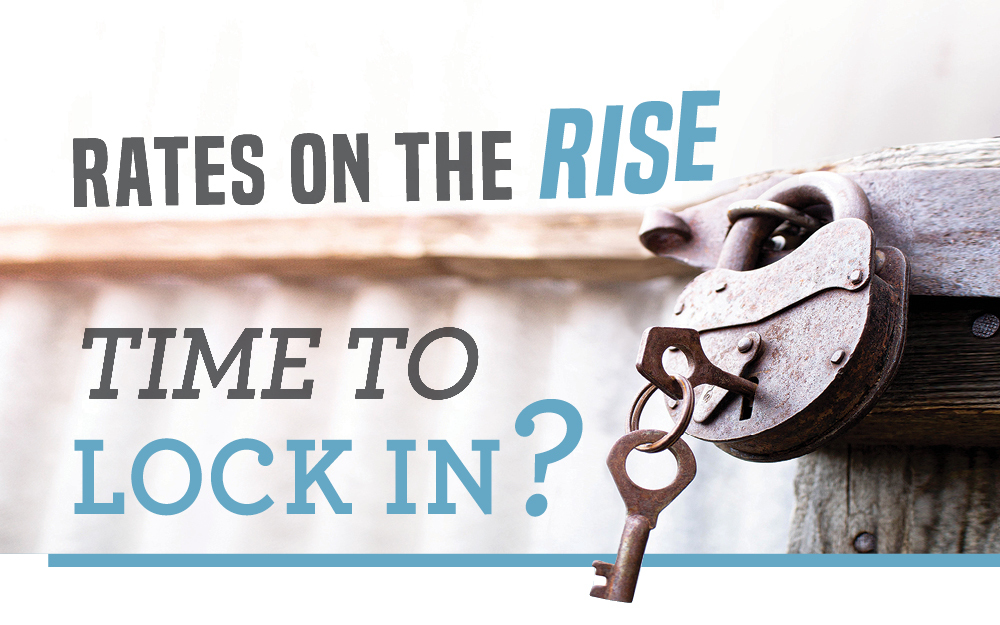ACT’s Professional Advantage: Save $70,000+ in Australia’s Most Stable Market
The Australian Capital Territory offers first home buyers a unique combination of Australia's most stable employment market and strategic...

In today’s fast-moving property market, it is particularly important that you’re as organised as possible before you start seriously looking for your next home. While it’s easy to get caught up in the house-hunting process, you’ll need to know your budget and more importantly, how much lenders will be comfortable lending you, when the time comes to put in an offer.
A mortgage pre-approval does all of this, and yet a recent survey shows a whopping 54 per cent of buyers missed out on a property because they didn’t have their pre-approval in place.i Here’s how to ensure you’ve got your pre-approval lined up, so you are ready to pounce when that perfect property comes along.
A pre-approval is generally your first step in the home loan application process. Having a mortgage pre-approval lets you focus your house hunting on the properties you can afford and also shows real estate agents that you’re a serious buyer who has started the loan process with a specific lender.
It is not a guarantee that your application will be approved but it does tell you how much you can borrow and what your repayments would be. It also reassures sellers that your finance will likely be approved sooner rather than later.
Conditional pre-approvals are a common type of pre-approval that can be done online by you or your mortgage broker, usually without the lender charging a fee. A conditional pre-approval can often be granted within a few hours. However, because your credit report and financial documents have not been fully assessed, it does come with conditions.
A conditional pre-approval doesn’t register as a request for a loan on your credit score. After you have made an offer on a property, the lender will do a full credit check that does leave a loan request on your file. Having multiple requests in quick succession with multiple lenders can be interpreted as financial instability, lowering your credit rating. This is why it’s so important to choose your lender carefully. We can help select a lender and loan that best suit your circumstances.
Understanding how your pre-approval works mean you won’t be caught out by having an out-of-date, or invalid loan application. This can leave you scrambling around for a new mortgage, harming your credit rating and missing out on that home you had your heart set on. Here are the conditions you need to keep in mind:
For most lenders, pre-approvals are valid for three to six months. It’s important to be aware of your lender’s time frame and what will happen if you don’t find a property within it. Speak to us if the house-hunting process is taking longer than expected and we may be able to negotiate an extension for you.
One pre-approval condition often included is a satisfactory valuation, which confirms the property is valued correctly and has no major defects.
Certain types of properties may not be acceptable to a lender. These can include very small apartments, properties in poor repair, specific apartment blocks, certain suburbs with fluctuating property prices, flood or fire insurance risks or properties with large power lines close by.
If your personal or financial situation changes after you’re pre-approved, the lender will reassess your application. The most common changes are to your work situation, any new or undisclosed expenses, a reduction in your deposit, changes to government incentives or regulations and having a child.
A change in your circumstances doesn’t automatically mean your pre-approval is cancelled. However, you still want to be as upfront with your lender as soon as possible. It’s always better to fix these things in the pre-approval stage rather than later on.
Showing sellers that you have a lender waiting to proceed to full approval could give you a big advantage against other buyers. It allows you to quickly make an offer or bid at an auction with confidence.
Speak to us today to get the ball rolling, so you can start house hunting with confidence!
i Property Possibilities: Buyers’ Outlook Report, Aussie and Lonergan Research
https://www.aussie.com.au/content/dam/aussie/documents/news/aussie-property-buyers-report-may-2021.pdf

We’ve had some adjusting to do over the past couple of years in terms of our time commitments. Many of us have had to deal with limitations around what we were able to do when lockdowns were implemented and conversely when restrictions are lifted there is a period of adjustment as the pace of our lives picks up again.
While it’s wonderful to be able to throw ourselves back into the flurry of work and a hectic social life, there is often a fine line between living a rich and fulfilling life and a stressful one. If you’re exhausted by the time the weekend rolls around and feel like there’s an ever-growing list of things to do in an ever-shrinking time span, you are not alone. According to the Australian Psychological Society’s annual survey, three in four Australians believe stress is affecting their health.i
This could have something to do with the fact that we are among the most wired citizens on earth. Australia outranks both the UK and the US in smartphone ownership. We’re equipped with time-saving technology but that 24/7 connectivity means we feel busier than ever, with emails, messages and app notifications scattering our concentration.
In Overwhelmed: Work, Love and Play When No One Has a Minute, US journalist Brigid Schulte describes this sense of being constantly behind as the ‘modern overwhelm’. She argues that we have come to equate busyness with success, yet research shows that working in 90-minute bursts with breaks in between is more efficient than working longer hours.ii
Productivity experts recommend making a to-do list each evening to mentally prepare for the following day, remembering to prioritise the tasks on that list. At the same time, they warn against over-scheduling; you need time in between appointments to digest what has been discussed and to mark your progress.
Multi-tasking is increasingly being shown to be detrimental to productivity and successful outcomes. Focussing on one thing at a time with your undivided attention can lead to greater success and less stress. Setting fixed times for responding to emails, as well as an auto-reply communicating this to senders, can also have a big effect on how harried you feel throughout the day.
Recognising when you’re overwhelmed is essential to your long-term health. It’s important to recognise warning signs such as feelings of fatigue and tightened muscles. Then you should look at whether your diet, exercise and sleep patterns need to change, as well as how connected you feel to a support system.
Rather than reaching for the sugary biscuits for an energy boost on a stressful day, healthy snacks or a small piece of dark chocolate can provide more of a calm-inducing endorphin hit. Better still, get moving. It’s well known the release of endorphins triggered by exercise can relieve feelings of stress, while research published in The British Journal of Sports Medicine confirmed that taking a 10-minute walk through a green space rather than an urban one is the quickest way to induce calm.iii
Meditation and yoga are popular stress busters, but there’s no one-size-fits-all method. You may wish to carry out a mindfulness exercise on your commute home or having another ritual to break the day between work and leisure, such as changing your clothes, to diffuse feelings of stress. The power of music to relieve anxiety is scientifically proven, but that doesn’t have to mean Mozart or whale sounds – creating ‘pump-up’ and ‘calm-down’ playlists that are personal to you will be most effective.
Psychologists and business coaches agree that being realistic about what you can achieve each day and having the confidence to say ‘no’ when asked to do more is vital to maintaining a healthy outlook and fulfilling life. That might mean turning off the iPhone right after you read this.
i http://psychologymelbourne.com.au
iii ncbi.nlm.nih.gov/pubmed/23467965 OR http://goo.gl/bIjnkp

As we navigate ongoing lockdowns due to COVID-19 across Australia, here is a guide to the latest benefits you may be entitled to from the Federal and State Governments.
The Pandemic Leave Disaster Payment (PLDP) is a program to support you, if you find yourself in a situation where you are unable to earn an income because you are required to self-isolate, quarantine, or are caring for someone with COVID-19. The payment provides a lump sum of $1,500 per fortnight and you will need to meet certain criteria, which does vary between states and territories.
A COVID-19 Disaster Payment (CDP) is available for workers who are adversely affected by a state public health order including a lockdown, hotspot or movement restrictions. Again, the eligibility criteria vary by state, as can the amounts.
In addition, Centrelink provides a one-off Crisis Payment for National Health Emergency payment for those affected by COVID-19. You would need to already be eligible for income support or in severe financial hardship and are required to quarantine or self-isolate or are caring for someone required to be in quarantine or self-isolation. You will only be able to access 2 Crisis Payments for National Health Emergency in a 6-month period.
While the ACT has a number of smaller support packages in place to help the community, the primary COVID-19 relief scheme available is the $1,500 Pandemic Leave Disaster Payment.
Similar to other states, if you can’t earn an income because you need to self-isolate or quarantine for 14 days, or need to care for someone with COVID-19, you may be eligible for the $1,500 Pandemic Leave Disaster Payment offered to Territorians.
On top of the state’s one-off 2020 $600 electricity bill credit, WA now offers the Pandemic Leave Disaster Payment.
In addition to PLDP, one-off grants of $300 are available to eligible workers required to self-isolate.
In addition to PLDP, grants are available to eligible low-income casual workers or self-employed Tasmanians required to self-isolate.
If you have any questions about the grants available or whether you are eligible, please don’t hesitate to contact us.

Stay up to date with the latest developments in the property market over the past month.
Our video takes you through an overview of the state of the property market, including a breakdown across all capital cities of the changes in dwelling values over the past month, as well as over a period of 12 months.
Please click here to get in touch if you’d like assistance finding the right loan for your situation.

Fixed term rates have never been lower in Australia but with some lenders starting to move fixed rates and further changes on the horizon, is it time to have a look around to ensure you are getting the best deal?
Here’s what you need to know about what’s happening to help you decide whether or not to fix your rate. If you would like to know more download my ebook here
Interest rates have been at an all-time low for quite some time now due to the COVID-19 recession, with the RBA cutting the official cash rate to 0.1% in November – down from the previous record low of 0.25%.
The current low rates have boosted Australia’s property market, with over 100,000 first homebuyers buying property since the start of the pandemic.i
These low rates have also spurred existing mortgage holders to review their arrangements. If you’re looking to refinance, you’re joining a growing number of Aussies doing so – 1.5 million according to a recent survey, with 45% of new lending occurring at fixed rates – this is usually around the 15% mark, so it’s a notable increase.ii
Despite the RBA stating they don’t intend to raise the official cash rate until 2024, some lenders have started to increase their longer-term fixed interest rates.
Concerns about inflation are having an impact on fixed rates. There has been conjecture that the RBA may be forced to increase their rates earlier than 2024 to put the brakes on inflation as the economy recovers from the COVID induced recession.
The anticipation of changes to lending conditions are also contributing to the possibility of increasing interest rates. Lenders have been able to access money at very low interest rates through the RBA’s term funding facility which was put in place to mitigate the impact of the coronavirus crisis, however this expired on June 30.iii And with bond yields on 4-, 5- and 10-year fixed rates increasing, there is pressure on lenders to increase longer-term rates.
Money website Mozo recently reported that at least 25 out of 99 lenders have increased their fixed rates since January, the majority being for 4- or 5-year terms.iv
Despite the some lenders beginning to lift some fixed rates, it can still pay to look around for lower rates. Refinancing can put you in a better financial position and fixed rates could be the way to go, but it’s worth being mindful that if you need to break a fixed loan early, this could prove costly.
And even with record low rates, always be aware of the possibility that rates can drop, in which case you could be spending more. Fixed rate loans also tend to be more restrictive than variable as you won’t be able to make additional repayments, or if you are, they will be capped. They also tend to have fewer features so you won’t be able to link to an offset account or redraw funds.
Should you want out, you will have to pay a ‘break fee’, and this doesn’t tend to come cheap. Savings.com.au reported break fees from a few thousand dollars to much more, so this is something to keep in mind. While fixed rates are less flexible than variable, it could be argued there has been no safer time to choose a fixed rate than now, so you’re less likely to want to get out of the loan.
If you have an existing loan, it’s always a good idea to reassess your rates and check that the type of loan you have in place is the best match for your circumstances. And for prospective homeowners, it is important to get advice on what loan is most appropriate for you before signing on the dotted line. There are a lot of things to take into consideration beyond getting the best rate so reach out today to find out more.
ii https://www.savings.com.au/home-loans/term-funding-facility-ending-june
iv https://www.savings.com.au/home-loans/the-potential-35-000-cost-of-breaking-a-fixed-home-loan
The Australian Capital Territory offers first home buyers a unique combination of Australia's most stable employment market and strategic...
The Northern Territory offers Australian first home buyers the most generous grant support in the nation, with the HomeGrown Territory...